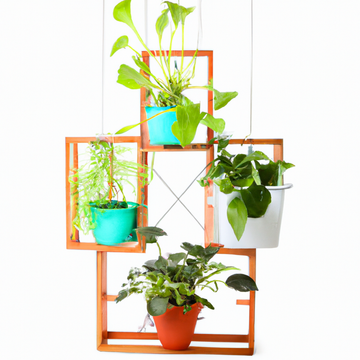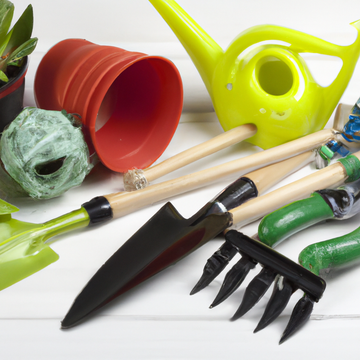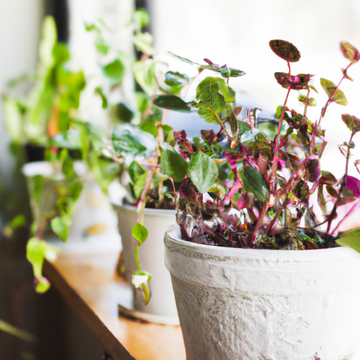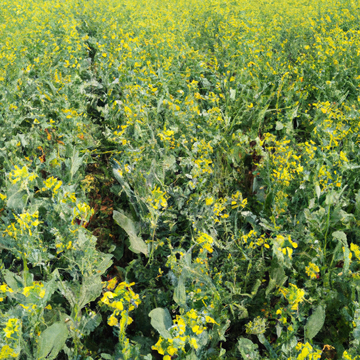Top 8 Gardening Trends To Watch Out For In 2023
by GOLDDUST- Rethink&Revive on May 16, 2023
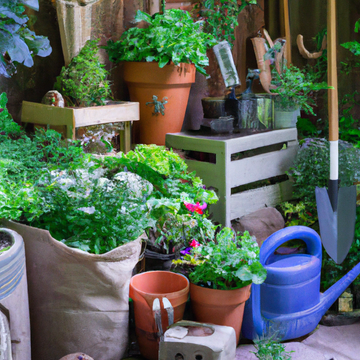
Gardening has become a popular activity in recent years, with many people finding solace and relaxation in nurturing plants. As we are in 2023, gardening enthusiasts are already buzzing with excitement about the latest trends that will shape the world of gardening. From container and vertical gardening to hydroponics and companion planting, there's something for everyone!
In this blog post, we'll dive into the top 8 gardening trends you should watch out for in 2023.
The Top 8 Gardening Trends for 2023
1. Container Gardening:

Container gardening is perfect for city dwellers or those with limited outdoor space. It's also a great way to add some greenery to balconies, patios, and porches. In 2023, we'll see more creative container options like upcycled materials and self-watering containers.
Container gardening has been an increasingly popular trend for a few years now, and it's easy to see why. Not only is it great for those with limited space or mobility, but it also allows for more control over the environment in which plants are grown.
One of the biggest benefits of container gardening is its versatility. Containers come in all shapes and sizes, making it possible to grow almost any type of plant. Whether you're interested in growing herbs, vegetables, or flowers, there's likely a container that can accommodate your needs.
Another advantage of container gardening is the ability to move plants around as needed. This allows gardeners to adjust their plants' exposure to sunlight or protection from harsh weather conditions.
In addition to being practical and functional, container gardens can also be aesthetically pleasing. With so many different types of containers available - from traditional terracotta pots to modern geometric planters - there are endless possibilities when it comes to designing a beautiful display.
Container gardening offers many advantages over traditional ground planting methods and will continue to be a popular trend among gardeners in 2023 and beyond.
2. Vertical Gardening:

Vertical gardening has been gaining popularity in recent years, especially among urban gardeners who lack horizontal space but have plenty of vertical real estate to work with! This trend will continue into 2023 as people look for innovative ways to grow plants vertically using trellises, wall-mounted planters or hanging baskets.
Vertical gardening is a technique that has been gaining popularity in recent years. It involves growing plants on vertical surfaces like walls, trellises, and fences instead of just traditional horizontal garden beds. This method is ideal for people with limited space as it maximizes the area available for planting.
One advantage of vertical gardening is that it makes harvesting easier since the plants are elevated from the ground. It also allows you to grow more plants in a smaller area while minimizing pest damage and soil-borne diseases.
The types of vegetables, fruits, or herbs grown vertically depend on your choice and preference. You can plant anything from tomatoes to strawberries or even lettuce using this approach.
To get started with vertical gardening, you will need containers suitable for climbing plants such as grow bags and indoor planters along with supports like bamboo stakes or trellis netting. Also, consider using organic fertilizers like mustard cake powder to provide essential nutrients to your growing crops.
Vertical Gardening offers an opportunity to create an eye-catching landscape using minimal space while producing fresh produce at home!
3. Indoor Gardening:

Indoor gardening is not only aesthetically pleasing but also helps purify the air in your home! The trend towards indoor gardening will continue in 2023 as more people want to bring nature indoors. From succulents on shelves to herb gardens on windowsills, there are endless possibilities for indoor greenery.
Indoor gardening is becoming increasingly popular, and for good reason. Not only does it provide a source of fresh produce right in your home, but studies have shown that having plants indoors can improve air quality and boost mental health.
One trend we're seeing in indoor gardening is the use of grow bags. These lightweight and flexible containers are perfect for small spaces. They also allow for easy drainage and aeration, which helps prevent root rot.
Another trend is the use of indoor planters that are not only functional but stylish as well. From hanging macramé plant holders to modern geometric terrariums, there are endless options to fit any décor style.
When it comes to what to grow indoors, herbs like basil and mint are easy and rewarding choices. Microgreens like arugula or radish add flavor and nutrients to salads or sandwiches. And if you have enough space, cherry tomatoes or peppers can even thrive inside with proper lighting.
No matter what type of indoor garden you choose to create, remember that patience is key when starting out. With some trial-and-error along the way, you'll soon be enjoying the benefits of fresh greens right from your own home!
4. Hydroponic Gardening:

Hydroponic gardening involves growing plants without soil using nutrient-rich water instead - it's an efficient method that yields great results! In 2023 we expect hydroponics systems designed for homes and small spaces will be more affordable than ever before making it accessible for everyone!
Hydroponic gardening is a modern and innovative way of growing plants without soil. Instead, the plants are grown in a nutrient-rich water solution that provides them with all the necessary elements for growth. This method of gardening has become increasingly popular in recent years due to its many benefits.
One major benefit of hydroponic gardening is that it allows you to grow plants year-round regardless of weather conditions or seasons. Since this type of gardening doesn't rely on soil, it's perfect for indoor environments like apartments and small spaces.
Another advantage of hydroponic gardening is that it doesn't require as much water as traditional soil-based methods. Additionally, since you don't have to worry about pests and diseases associated with soil, you can avoid using harmful pesticides and herbicides.
Hydroponic systems also allow for better control over plant growth and cultivation. With precise monitoring and manipulation of nutrients levels, pH balance, temperature, light intensity, airflow etc., growers can ensure optimal plant health throughout their life cycle.
Hydroponics offers an efficient way to produce high-quality crops while saving resources like space and water. If done right by following some basic guidelines & techniques one can achieve excellent results through Hydroponics Gardening!
5. Aeroponic Gardening:

Aeroponics is another soil-free planting technique where roots hang freely while being misted by nutrient-dense water droplets- this method allows the plant’s root system maximum oxygen exposure which promotes rapid growth rates when compared with traditional farming methods.
Aeroponic gardening is a unique and innovative way of growing plants that involves suspending the plant's roots in the air while misting them with water and nutrients. This method can increase plant growth, yield, and improve crop quality.
One of the major benefits of aeroponic gardening is its ability to conserve water. Since it uses less water than traditional soil-based methods, aeroponics is an eco-friendly option for those who want to grow their own food.
Moreover, because there are no soil-borne pests or diseases involved in this type of gardening, plants grown using aeroponics are often healthier and more resistant to diseases.
Another significant advantage of this technique is that it allows you to grow plants all year round regardless of weather conditions outside. This makes it ideal for urban dwellers who want fresh produce but don't have access to outdoor space.
Aeroponic Gardening represents the future when it comes to sustainable farming techniques. Its unique approach opens up new opportunities for gardeners everywhere who want an efficient way to grow healthy crops without harming our planet.
6. Aquaponic Gardening:

Aquaponics combines fish farming and hydroponic techniques together creating a symbiotic environment between fish waste and plant growth - the result? A low-maintenance ecosystem that produces fresh produce year-round - what could be better?
Aquaponic gardening is a type of gardening that uses a combination of hydroponics and aquaculture to grow plants. This method allows for the cultivation of both fish and plants in one integrated system. The setup includes fish tanks, where water from the tank containing waste products from the fish is pumped into plant beds. Here, bacteria break down the harmful waste compounds into nutrients essential for plant growth.
The benefits of this type of gardening are many! Aquaponic gardens require less maintenance than traditional gardens because they use less water and fertilizer. As a result, it can save money on utilities while reducing environmental impact.
Aquaponic systems also produce fresh organic vegetables free from pesticides and chemicals, making them healthier options for consumption by humans or animals alike.
Moreover, this unique approach to gardening offers an excellent opportunity to teach children about sustainable living practices as well as developing necessary skills in science-related fields like biology or chemistry!
Aquaponic gardening has endless possibilities with its ability to provide fresh food sustainably while promoting education about environmental awareness!
7. Organic Gardening:

Organic gardening is not new but it's gaining more attention as people become increasingly. Organic gardening is more than just avoiding the use of synthetic fertilizers and pesticides. It involves working in harmony with nature to create a healthy and sustainable garden ecosystem. This trend has been gaining popularity over the years, as people become more aware of the health and environmental benefits of organic produce.
One key aspect of organic gardening is soil health. Organic gardeners focus on building up their soil through composting, cover cropping, and crop rotation. By ensuring that their soil is rich in nutrients, they are able to grow healthier plants that are better equipped to fight off pests and diseases.
Another important factor in organic gardening is biodiversity. Organic gardeners aim to create a balanced ecosystem by planting a variety of crops, flowers, and herbs that attract beneficial insects like ladybugs and bees. This helps control pests naturally while also supporting pollinators.
In addition to being better for your health and the environment, choosing organic gardening methods can also be cost-effective in the long run. By creating a self-sustaining garden ecosystem with healthy soil, diverse plantings, and organic pest control measures, you may find that you need fewer inputs like fertilizer or pesticides over time.
Organic gardening offers numerous benefits for both your own well-being as well as the planet's health. Whether you're growing vegetables or ornamental flowers, incorporating these practices into your routine can help support a thriving garden ecosystem for years to come!
8. Permaculture:

Permaculture is a holistic approach to gardening that emphasizes sustainability, biodiversity, and self-sufficiency. It involves designing ecosystems that mimic natural patterns in order to create an environment where plants and animals can thrive together.
One of the key principles of permaculture is the use of companion planting. This involves growing different types of plants together in order to promote mutual benefits such as pest control or soil improvement.
Another important aspect of permaculture is soil health. Permaculturists believe that healthy soil is the foundation for a successful garden, so they focus on building up organic matter through techniques like composting and mulching.
Water conservation is also a big part of permaculture design. By using techniques like rainwater harvesting and drip irrigation, gardeners can reduce their reliance on municipal water systems while still keeping their plants healthy.
Permaculture offers a sustainable alternative to traditional gardening methods. By working with nature instead of against it, we can create thriving ecosystems that benefit both ourselves and the planet as a whole.
Companion planting is a trend that's gaining popularity among gardening enthusiasts. It involves planting different crops together to create a mutually beneficial relationship. For example, growing basil near tomatoes can help repel pests and improve the flavor of the tomatoes.
In 2023, expect to see more gardeners practicing companion planting as a way to promote natural pest control, increase crop yields, and improve soil health. This method focuses on creating a diverse ecosystem in your garden instead of relying on chemicals or fertilizers.
As we look towards the future of gardening trends, it's exciting to see how technology and innovation are changing the game for amateur and professional gardeners alike. Whether you're interested in hydroponics or permaculture, there's something for everyone.
So get ready to break out those grow bags and indoor planters because the world of gardening is evolving faster than ever before!

